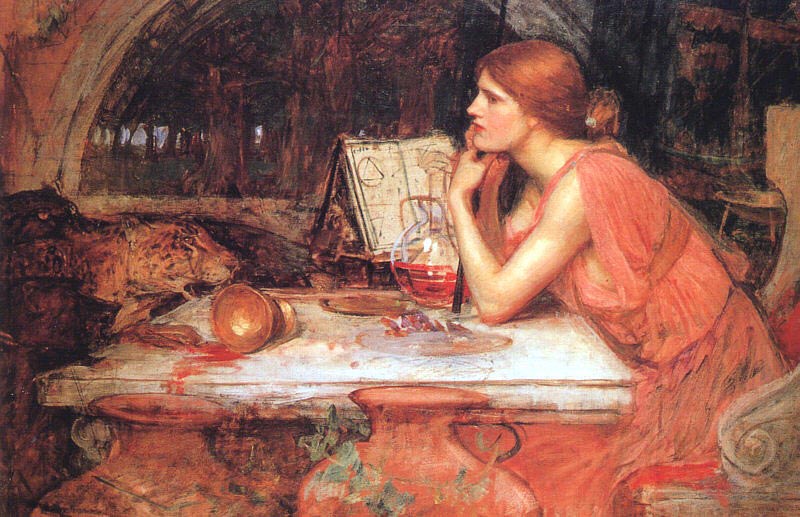How to Poison Like an Ancient Roman

Livia Drusilla, the devoted and loyal wife of Ceasar Augustus, was extremely supportive of her husband. She was even good enough to look the other way during his many infidelities. In fact, she was a symbol of the ideal wife to the whole Roman empire. Sure, she had her faults. We all do. Hers just happened to be poisoning people to death. Six or seven may seem excessive, but hey, she probably had excellent reasons.
Poisoner Extraordinaire
The fact is, poisoning was a pretty popular way to get rid of someone in Ancient Rome, and the trend knew no social boundaries. Women, in particular, seemed to excel at it. In fact, at one point the word adulteress was synonymous with a poisoner. After all, a woman who has an affair has a lot to fear. All those people who could find out about her transgressions—husband, parents, friends. The only safe way out is obviously to kill them. Or so went the thinking.
However, the thinking was flawed. Roman women didn’t just poison for love. They also did it for money. In fact, there were several famous female poisoners for hire in ancient Rome. The most well known being a woman named Locusta. Locusta was already famous for her work when Empress Julia Agrippina hired her in 54 AD. She was the second wife of Emperor Claudius.
Julia wanted her sweet boy Nero to become Emperor of Rome, and she needed to get her husband out of the way. Of course, Locusta made easy work of the problem. Her excellent resume got her a job as Nero’s personal poisoner. Her first job was to get rid of the last obstacle between him and the throne, Claudius’s son Britannicus. After that, Nero hired her as head instructor at her very own school for the poisoning arts. This way he could have a whole army of poisoners if he wanted.

Criminal Minds
Now, women did a pretty good job at poisoning but let’s be fair, men were in on it too. It was actually quite fashionable to kill whoever stood in the way of you and your inheritance. Just look at this list of emperors who had a go at it:
- Caligula (who incidentally left behind a large trunk of poisons)
- Nero (Besides Britannicus, his aunt Domitia, he tried 3 times to kill his mom Agrippina. And after all she did for him!)
- Vitellius
- Domitian
- Commodus
- Caracalla
- Elagabalus
The Tools of the Trade
There were many ways to poison someone, which is why Locusta needed her school. Customer satisfaction is important in any trade after all. Do you want something slow-acting, or rapid? Are you interested in physical deterioration, or mental? How about something causing the victim to become speechless until the moment of death? If your interested in respiratory failure why not try henbane? The oil from the seed drives the victim insane.
Aconite is another good one. It was known as the mother-in-law’s poison. If one considers the number of sons-in-law in this world, its wide use isn’t surprising.
Yew berries are quite effective. Pliny advised not to even sleep under a yew tree, it’s that dangerous. Well, that’s unless you drive a copper nail into the wood of the tree. In that case, your good.
Mushrooms were a popular and easy option since they can be slipped into someone’s plate and sort of mingle with the other mushrooms unnoticed. Again Pliny has some useful advice, just stay away from mushrooms altogether no matter how tasty you find them. You’re much safer that way.
Agrippina supposedly poisoned Claudius in a dish of mushrooms. If only he had listened to Pliny, he might have lived longer. Still, poisons were mixed into wine, figs, and even hotcakes* so all food was suspect. This is why many Emperors had food tasters. So why didn’t Claudius hire one, you say? Well, he did. His name was Halotus and he came under quite a bit of scrutiny after Claudius’s death. There’s a good chance he was on Agrippina’s payroll since he kept his job when Nero became emperor.

Nothing’s Safe
Needles were another way to administer poison, so even if you put your food under the most rigorous tests you could still end up dead. Just one little prick was all it took. The victim might feel a slight sting and mistake it for a bug bite. Until they keeled over that is.
And speaking of bugs, you could kill with those as well. One could use a Spanish fly, a scorpion, toad slices, a variety of fish, the list just goes on. It seems a person could poison for years and not run out of options. No wonder Nero saw the need for a school.
Second Chances?
And what about antidotes? Could a person escape their fate in any way? Well yes, they could. Asse’s milk was supposed to cure mineral poisonings and cow’s milk helped for hemlock. Wine was thought to be the best remedy for bites and stings.
Several people saw the handwriting on the wall and did what they could to protect themselves from possible poisoning. Agrippina fortified herself with antidotes, which is how she escaped her beloved son’s attempts.
Incidentally, the difference between a poison and a remedy often only came down to one factor, the dose. Opium poppy, for example, was widely used as a digestive aid and pain reliever. It’s the larger doses that caused stupor and death.
The question remains, however, how many of the claimed deaths by poison were real? Post- mortem investigations were hardly CSI worthy. Conclusive evidence one way or the other would have been hard to find. The general thinking was darkening of the skin and early bloating coupled with delayed putrification were good indicators of poisoning, but really that’s not so reliable. True or not it doesn’t matter. According to Cassius Dio, the Roman statesman and historian, it was that blacking of the skin that got Nero in trouble. After the poisoning of Germanicus, he whitened his body with gypsum. Nature was against him, however, and as they carried the body through the forum it rained heavily. The gypsum was washed off, exposing his crime to everyone. Seems he would have benefitted from some of Locusta’s classes.
Notes and Sources:
This is clean fun kids, please don’t try any of this at home.
*according to Juvenal
https://pdfs.semanticscholar.org/3852/a7058037884eb18d3f087169bbbe8bc3e11c.pdf
https://culturacolectiva.com/history/locusta-first-serial-killer-was-a-woman
http://penelope.uchicago.edu/Thayer/E/Journals/CP/27/2/Poisoning*.html
Related Posts
In Ancient Rome, Smelling Good Made You Godlike
The city of Rome was a lot like its modern counterparts. There were shops, offices…
August 13, 2020


Leave A Comment